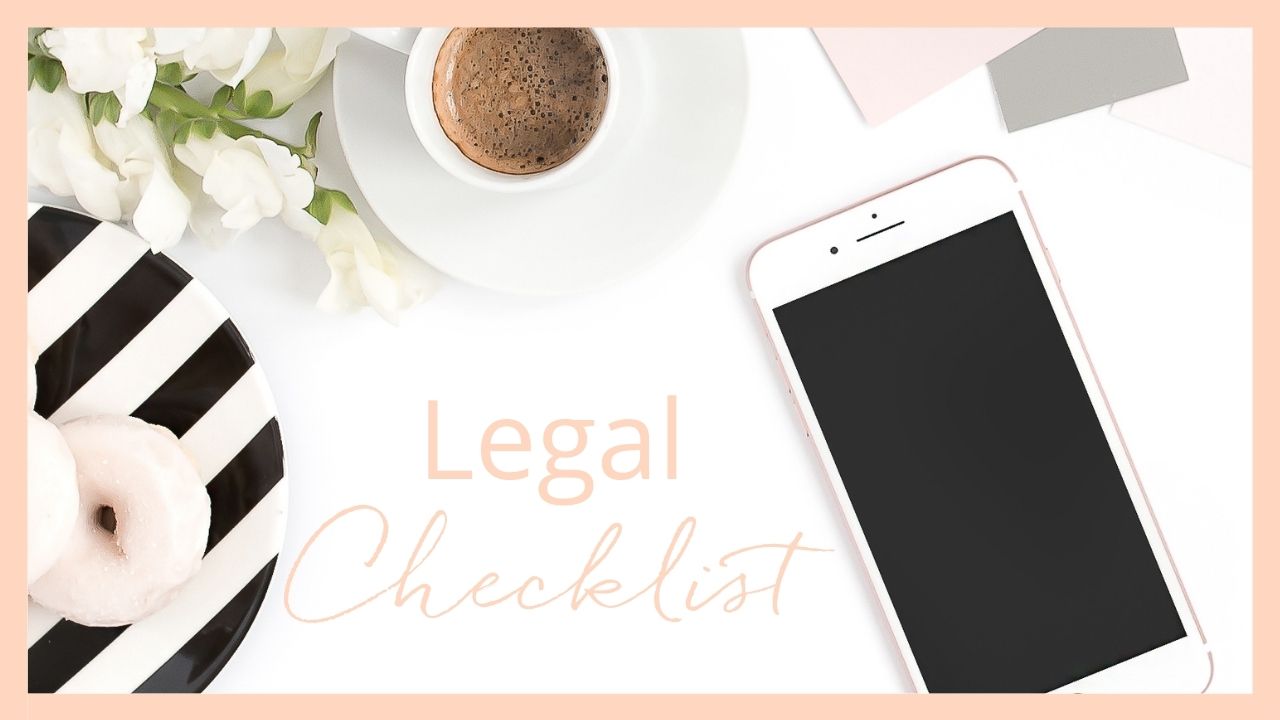
Okay so I’ve had a LOT of confusion around this issue lately, so I wanted to take a sec and get this confusion cleared up and get you squared away: Terms of Use, versus Terms and Conditions.
Before you glaze over at the thought of how dry and boring this topic is…WAIT! PAY ATTENTION!
These documents are VERY important to have on your website, and could save you thousands in legal fees and headaches if you have them done correctly…so listen up! J
WEBSITE TERMS & CONDITIONS
This is the document that goes at the bottom of your website, and covers everything related to your website. (Not your group programs, not your 1:1 coaching, just your website). Terms & Conditions act like an agreement between you and everyone who visits your website – so these are not your clients yet…just those who come to your site and check things out.
This is important for a LOT of reasons – however, given the concern lately for content protection, and what to do when someone swipes your website content…i’ll start there. THIS is the document that will help you in the event someone comes along and swipes your latest blog post, only to paste it into their website as their own content (THE NERVE!!!)
So how does this document help in that situation?? THIS is where you protect your content, and advise everyone who comes to your website that the content on the site is YOURS; is your intellectual property, and that it may not be copied, sold, repurposed, stolen, etc. without your express, written consent. IF someone does steal your content without your permission, this document also advises them they understand this is a violation of U.S. Federal law, and that you reserve your right to go after them.
WHY does this help? In short…it puts them on notice, and by having this document in place, your website visitors agree to it just by visiting your site. Because of this, they are essentially agreeing that if they steal your content, it is a violation of federal laws. This makes it easier to send them a nice little email or letter, show them your Terms & Conditions, advise them that they have violated your Terms & Conditions (which they agreed to by coming to your website), and request they take down the infringing work ASAP.
Your Terms & Conditions also define which state laws apply to any disputes related to your website (hint: choose YOUR state), and limit your liability as to the content you post.
SUMMARY: Website Terms & Conditions are like an agreement between YOU and your WEBSITE VISITOR. Not your client, not related to your programs or packages. JUST your website and the content on your website.
TERMS OF USE
This document, (also called Terms of Service or Terms of Purchase) is what you need as soon as you begin selling group programs, or any digital products that can be purchased by a customer directly from your website, without any direct communication or contact with you…. aka a passive product.
THIS document acts as the agreement between YOU and the PURCHASER OF THE PRODUCT. So, this document will include all relevant information about that product only, and is similar to what you’ll have for working with clients privately, in a Client Agreement.
Your Terms of Use will include all product/program information for the specific product or program the client is about to purchase, as well as information on your payment policy (and payment plan!), refund policy, how disputes related to the program are resolved, and that the content in the specific program they are purchasing belongs to you and is your intellectual property that they may not use without your permission. Also, in group programs, this is also where you’d include confidentiality and language similar to a non-disclosure, as each member of the group program will likely learn private information about the other members in the group and the programs they are working to create. (You don’t want to be on the hook if someone in your group program steals another members’ idea!)
SO OFTEN I see coaches and online business owners complete their sales page, and require their new customer to agree to their website Terms & Conditions at checkout. (SO CLOSE!) BUT – as you can probably see now, this doesn’t help you at all! Your new customer needs to agree to the Terms related to the specific product they are purchasing…NOT your general website terms.
SO! To sum it all up:
Your Website Terms & Conditions are for your WEBSITE only, and go at the bottom of your website. Everything in this document relates to your website only; not your programs, packages, or other detailed information about your services.
Your Terms of Use documents (remember – it’s best to complete one for each program you offer) are for THAT group program or digital product, and are placed on the checkout page where your customer completes purchase of that program. This document acts as the contract between you and this customer relating to their purchase of that specific product. Everything in this document is related to that specific program (payment, payment plans, what happens if they don’t pay, program outline, etc.)
Need either document? CLICK HERE to get your Website Terms & Conditions, or CLICK HERE to get your Terms of Use template now!
Grab my FREE Legal Checklist to see if Your Business is Legally Compliant!


